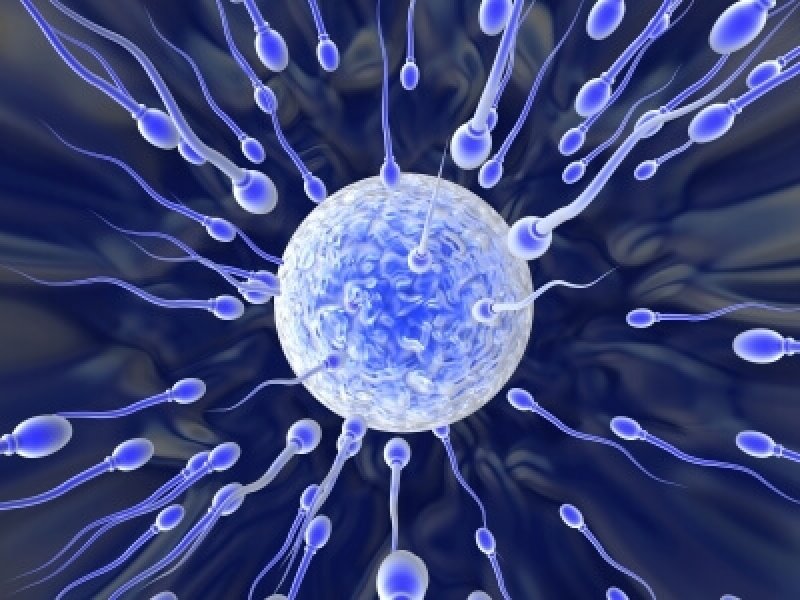Francisco Schwandt will have quite a collection of hand-me-downs to bolster his wardrobe. The new born boy has twelve older brothers ranging from age 22 to one.
Given that any one child has roughly a 50 percent chance of being male or female, how can one family have 13 boys? Is Francisco just a statistical anomaly? Or are the Schwandt brothers an extreme example of the commonly believed old wives tale that brothers and sisters can run in families?
When Francisco’s older brother Tucker was born, the Wall Street Journal asked population expert Joel Cohen to lay out the odds. “This is a one in a million family,” Cohen said when the twelfth son was born, making Francisco’s odds of being born male even lower.
But some researchers who look at and model populations believe genes exist that skew the ratios promoting the formation of more X or Y-chromosome carrying sperm. Corry Gellaty, now at Universitiet Utrecht, thinks some gene or set of genes on the Y chromosome bumps up the chances of having sons. This, he says, explains the reason why the number of males and females remains steady despite periodic mass deaths of men in wartime throughout history:
The gene makes fathering offspring of a particular gender more likely but not a certainty, he adds, and inheritance from father to son is diluted by the part of the gene that the mother contributes. “It’s a fairly small effect. If it was a larger effect, it would have been noticed before.”
Gellatly’s theory can also explain why an increase in boy births may be seen after a war. Families with more sons will be more likely to have surviving male children, who can pass along their genes, while families with fewer male offspring are less likely to have surviving sons.
It’s crucial to note that Gellatly didn’t find a particular gene, Instead, he found an effect in the population as a whole that a potential gene (or genes) could explain.
When I learned about the biological processes that determined whether a sperm would carry an X or Y chromosome and produce a male or female child it was a straightforward process. The odds of ending up with an X or Y were even for any one sperm and there was no funny business.
We now know that this process—and the congruent one that develops eggs in women—are anything but simple. Sex chromosome chimerism, where there is an extra X or Y chromosome in some cells, is far more common in the natural world than this text-book idea of sperm determination would predict.
And, it turns out, the maleness or femaleness of a developing fetus isn’t really determined by the presence or absence of the Y chromosome in the lucky sperm. Maleness is caused when the tissues surrounding an embryo’s primitive gonads contain a specific genetic region, SRY, found on that Y-chromosome. So, in the case of men with XXY chimerism, called Klinefelter’s syndrome, there is a high enough ratio of SRY to non-SRY containing cells surrounding the proto-genitals that testicles develop.
Scientists have been experimenting with this for nearly 100 years by tinkering and transplanting embryonic tissues in mice that induced maleness even if the genetics of the mouse predict it should be female. This is well before they anyone knew about SRY and the genetics behind their findings. It’s also really interesting to consider sex and gender identity given that ‘what makes a man’ is a relative level of a handful of proteins made by the SRY gene package. This could potentially be a clue to the origins of transsexualism and transgenderism.
But these factors determine whether a fetus becomes male or female, not how one man’s sperm should preferentially carry Y-chromosomes over Xs.
Gellatly’s idea of son or daughter-preferential genes would have to convey some advantage to some sperm over others. That means the potential gene would likely produce a protein that made Y-containing sperm fitter swimmers. Or perhaps changed the cell makeup of Y-carrying sperm heads to dissolve them faster when they reached an egg, shortening fertilization time.
While we know how this gene would work on the population level, thanks to Gellatly’s model, the possibilities for its biological mechanism are exciting and potentially endless. If and when scientists go looking for it, families like Francisco’s will provide important clues.
Meredith Knight is a contributor to the human genetics section for Genetic Literacy Project and a freelance science and health writer in Austin, Texas. Follow her @meremereknight.
Additional Resources:
- Is climate change reducing the number of boy babies? Genetic Literacy Project
- Where are the missing females? Do skewed sex ratios in China, elsewhere lead to social problems? Genetic Literacy Project
- Bruce Jenner’s transgender ‘coming out’: He’s not alone, but is it in the genes?, Genetic Literacy Project































